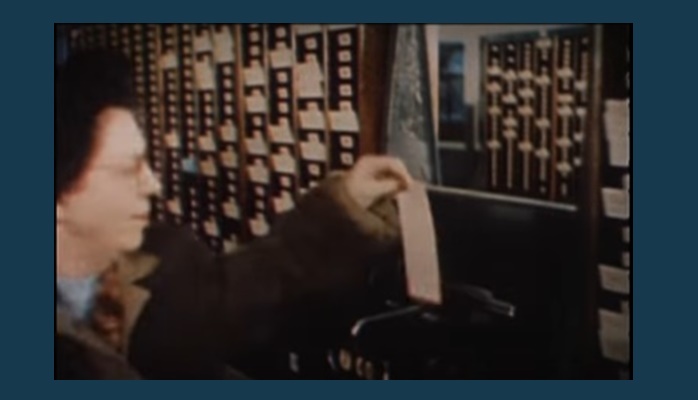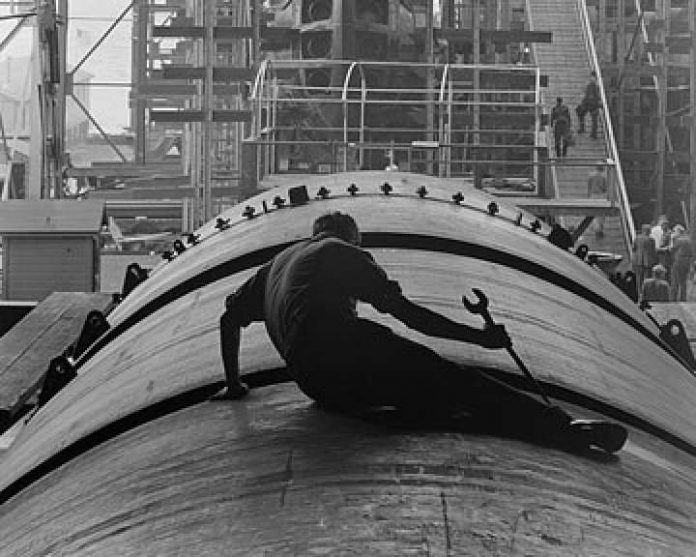OGDEN, Utah, Jan. 27, 2017 (Gephardt Daily) — Work. It’s a frequent topic of conversation at home, one of the things that made America great, and a four-letter word.
But how much do we really know about the work and workplaces of previous generations of Americans, from the mid-19th century, when 60 percent of Americans made their living as farmers, up to the late 20th century?
You can find out at Ogden’s Union Station, 2501 Wall Ave., where the Smithsonian Traveling Exhibition, “The Way We Worked,” will feature 86 photographs from the National Archives, giving you an up-close look at the history of work in America.
The exhibit opens at noon Saturday and runs through March 19. It is free to the public.
According to a news release from Union Station, the exhibit documents the work clothes, locales, conditions and conflicts of workers through the years. This exhibit at Union Station is the first stop on a seven-city tour that will continue through 2017.
In conjunction with the Smithsonian’s exhibition, Union Station has created a partner exhibition that focuses on Weber County. This exhibit highlights stories from members of the community who have worked in a range of local industries and professions, the news release states. It will look at the development of Weber County and the role that the railroad, military, and modern industries of today have played in that development. Stories, photographs, and various artifacts from people of different ethnicities and ages will illustrate the diverse nature of the local workforce over time and the perseverance and resilience of that workforce.

So, if you’re looking for an activity for the whole family that doesn’t involve being out in the bone-chilling cold, “The Way We Worked” and Weber County exhibitions and programs at Union Station may be just the thing. And it might even give us a new perspective on work, that good old four-letter word.
Union Station has also designed almost a dozen public programs to allow audiences and visitors to access this exhibition in a number of ways.
The schedule:
Family activity: pottery, 11 a.m.-2 p.m. Feb. 4, Grand Lobby — Pottery is one of the world’s oldest art forms and making pots one of the oldest jobs. For this family art activity we will learn about traditional ways American Indians and Utah Pioneers made pottery and then try our hand at coil pots, slab pots and pinch pots using air-dry clay. Workshop conducted by Education Curators from Utah Museum of Fine Arts.
Free poetry workshop, noon-4 p.m. Feb. 11 (preregistration required) — The workshop, taught by Ogden’s inaugural Poet Laureate Brad Roghaar, is designed to explore and interpret the themes of “work” and “labor.”
Storytelling Event and Panel, 7-8 p.m. Feb. 13, Grand Lobby — Focusing on the stories of those whose labor has been impacted by gender, race, income disparity, and other social issues, Union Station has invited members of the Weber County community to share their stories in front of an audience with the aim to encourage dialogue about how social issues can present challenges in the way we work.
“Art at Work” panel, 6:30-7:30 p.m. Feb. 15, Grand Lobby — Union Station has invited several Weber County-based artists from multiple disciplines to talk about the value of creative work and its contribution to a greater community effort.
Share your story, Feb. 25, March 7, March 17 — Throughout the duration of “The Way We Worked” at Union Station, Utah Public Radio will record 15 oral histories from visitors and community members over the course of three days. This program aims to document otherwise undocumented tales of Weber County’s labor history. Contact Danielle Susi, volunteers@theunionstation.org, or 801-393-1481, for full details if you have a story you would like to share.
Associated exhibit in March — The Myra Powell gallery in Union Station will house the exhibition “Fiber [Work]”, as curated by our Public Programs Coordinator to showcase a different kind of “work” done by women and Native peoples of Weber County. Those interested in contributing should contact Danielle Susi, volunteers@theunionstation.org or 801-393-1481.
“Fiber [Work]” demonstration, noon-1:30 p.m. March 7, Grand Lobby — In conjunction with the “Fiber [Work]” exhibition, a fiber art demonstration will be given by Judy Elsley, who will show and talk about the various stages of fabric dying and other cloth-making techniques. Both the exhibition and demonstration aim to examine how we work and offer an alternative to other kinds of “traditional” labor while simultaneously serving as an example of traditional “home-work”.
Ogden After Dark lectures, Val Holley will talk on “The Way We Burped: Bootlegging and Other 25th Street Career Paths.” Sarah Singh will present “Sisters of Scarlet: Prostitution in Ogden,” at 7 p.m. March 17, Browning Theater.
Walking Tour of Historic 25th Street, 1-2 p.m. March 18, led by Val Holley.
The Way We Worked has been made possible in Ogden by Utah Humanities. The Way We Worked, an exhibition created by the National Archives, is part of Museum on Main Street, a collaboration between the Smithsonian Institution and state humanities councils nationwide. Support for Museum on Main Street has been provided by the United States Congress.




Great exhibit! Thank you for reminding me of the types of work our ancestors did so I can fully appreciate how much I love modern technology that I use at home and at work. I would love to have a conversation with my great grandmother so I can try to explain the technology we use that allows me to work remotely. Thank you!! Terri